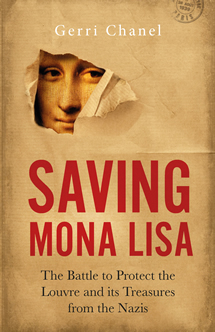Reviewed by Rama Gaind.
By Gerri Chanel, Icon Books, $29.99.
 When a chronicle is labelled as being a ‘compelling true story of art and beauty, intrigue and ingenuity’, curiosity comes to the fore. The need to probe is awakened.
When a chronicle is labelled as being a ‘compelling true story of art and beauty, intrigue and ingenuity’, curiosity comes to the fore. The need to probe is awakened.
That’s when you are compelled to pick-up this book to learn more about the remarkable moral courage in the darkest of times.
The biggest evacuation of art and antiquities in history began in 1939 when in August of that year, curators at the Louvre nestled the world’s most famous painting into a special red velvet-lined case and spirited her away to the Loire Valley.
As the Germans neared Paris in 1940, the French raced to move the masterpieces still further south, then again and again during the war, criss-crossing the southwest of France. Throughout the German occupation, the museum staff fought to keep the priceless treasures out of the hands of Hitler and his henchmen, often risking their lives to protect the country’s artistic heritage.
Thus a story that features as a vignette in the George Clooney film The Monuments Men is given the full-length treatment it demands. The recipient of several independent publishing awards in the United States, and illustrated throughout with nearly 100 photographs, Saving Mona Lisa is a compelling true story of art and beauty, intrigue and ingenuity and remarkable moral courage in the darkest of times.
More than 3,600 paintings would be evacuated from the Louvre along with many thousands of drawings, engravings, sculptures, antiquities and objects d’art, plus the museum’s archives and much of its library.
This is a comprehensive, enthralling narrative about the battle Louvre staff had on their hands as they fought to hold on to the priceless treasures during the German occupation. It’s well researched and is accompanied by mesmeric photographs of the period.
“For six years, the Louvre’s directors and its staff would risk their jobs and, in many cases, their lives, to protect the artworks and the Louvre palace not only from the personal appetites of the German leaders but also from bombing, fire, flood, theft and the viciousness of German military reprisals.”



